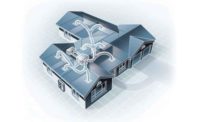As a young software developer in his native Australia, Tim Olshansky came to the U.S. to join a company with college friends already in San Francisco with the expectation of staying a year or two.
“Now 10 years later, here I am,” said Olshansky, who now serves as executive vice president of product and engineering with Zenput. “We had all reached that point where we wanted to do something different. We had an opportunity to build a business.”
He joined Zenput in November 2018 as vice president of engineering. The company, at the time, staffed around 30 people. In addition to managing the engineering team, Olshansky worked with the product management team and design to implement and improve processes.
Today, Zenput has grown to 80 people and continues to expand. Around the middle of this year he took on managing the product management team.
“My role is basically everything product development, including things like security and IT,” Olshansky said. “All forms of engineering, I guess you could say.”
His role now covers everything from executive-suite discussions around strategy to budget planning for next year to getting into some of the specifics of new features for the product.
“Day-to-day, I probably split my time 60% engineering, 30% product management, and 10% design.”
How distance has made collaboration harder but also better
Referencing the six biggest downsides to remote work, research showed that full-time, remote workers often have a harder time problem-solving and being creative without the spontaneous ideas and networking that offices can offer. Many workers find it more difficult to collaborate with colleagues virtually.
Back when he was a heads-down software engineer, Olshansky said full-time remote work would have actually been fantastic because he was free of distraction. But, in his current role as an engineering leader, distance turns a five-minute chat at somebody's desk into a trickier task.
“We've had to get much better at communicating,” he said. “We're a lot more intentional about how we communicate.”
Getting more intentional about docs
Since a “good chunk” of the engineering team worked remote before COVID, the team went in with some norms about documentation already established.
“Of course, it was never particularly detailed,” Olshansky said.
Instead, the documentation served as a starting point for a conversation.
“Since the start of the year, we've been much more intentional,” he said. “We've started to organize our information in the way it needs to be used.”
They’ve implemented actionable playbooks for new managers that explain, for example, how to run a Scrum sprint.
“We favor clarity and brevity over extensiveness, so that people know enough that they can just ask questions without having to churn through a lot of documentation,” Olshansky said. “We use Confluence as our kind of internal wiki. We're standardizing the whole company on it. One of the rules is there's not multiple documentation sources. We've consolidated everything. We have debates internally around other tools. But, since we've been on the Atlassian suite for a while, why add yet another tool to the mix?
“Everything goes in one place and only one place,” he continued. “If it's not in Confluence then it doesn't really matter. If you want it to matter, put it in Confluence. We're using a little bit more structure to help people. We've onboarded a lot of new employees in this time, and so we've used templates and things in our tools to create sort of a consistent onboarding experience that's fairly self-serve. We've had a chance to refine it with a combination of videos from Loom; written stuff; Slack, to a large extent; and various automation bits and pieces we've built. It's made it a lot simpler for us.”
The tools they’re using to collaborate over distance
“We've been recording a hell of a lot more of our meetings than we were previously,” Olshansky said. “My team has been using tools like Loom to avoid having to have synchronous meetings to give people continued focus time, which I think has been working well. We’re also fans of Focus Time.
He also uses Loom to send messages with more emotion than an email conveys or just to avoid having an unnecessary meeting. The company has also begun using Figma for design.
“Figma’s been working well for remote collaboration,” he said. “Before the pandemic, Figma went hard on collaborative design. When we spoke to Jared Erondu, head of design at Lattice, about his remote toolset, he mentioned he’d been using Figma for remote ‘whiteboarding’ and fun team exercises, as one of our designers made a design system game in it.”
Zenput also recently implemented Productboard to help consolidate the customer feedback on the product that would come in through multiple channels.
“We've tried to find tools to consolidate things in one place for everybody so they don't have to go to 50 different things to find info they're looking for,” Olshansky noted. “It’s also a better way for us to share roadmaps.”
For team community-building and morale, they recently adopted Donut, a Slack app that pairs employees randomly for “coffee chats.”
“That's been great,” Olshansky said. “It's created a little bit more connection amongst people who haven't had a chance to interact and may not have a chance to interact for quite some time.”
Remote work has also made it more difficult for leadership to know which engineers are engaged and productive. Olshansky offered three tried-and-true tips for helping Engineers accelerate their professional growth.
The visibility challenge
“I think the challenge with a remote work environment is [there’s] less visibility from the next level of management,” he said. “Obviously, it’s important for your direct manager to know what you’re doing. If your manager has no idea what you're doing already, that's already a pretty big red flag. This is obviously harder over distance. So, tips like sending your boss a weekly ‘state of me’ email with what you’re working on, anything relevant going on in your life, any blockers, etc., can be extra helpful.”
Even when your manager has a good idea of what you’re working on, their manager still might not. The challenge with working from home is that your manager's manager may not have the same level of visibility into what you're doing that they might have had previously in an office environment. “That might not be a reflection of you,” Olshansky said. “It might be the fact that your manager is not in the office with their manager and is not communicating everything that's going on.”
How to be more visible
Olshansky recommends three tips for making sure your work and contributions stay visible even over distance.
1. Step up to the plate — To help ensure your boss’s boss knows what you’re doing, Olshansky recommends communicating in a more public fashion, for lack of a better term. “I don’t mean just chatting like crazy on Slack or anything like that,” he said. “Although, I personally don't mind it. Actually, I love seeing lots of activity and active discussions on meaningful things as well as fun things in different channels.”
It’s more about raising your hand when there’s an opportunity to publicly contribute. For example, if there is a big technical problem that a lot of people are getting together to discuss, Olshansky recommends volunteering to type up notes and share them with the team after the meeting.
“In other words, you don’t necessarily have to be the person coming up with all the answers but at least take initiative around communicating more,” Olshansky said. “Take the lead and communicate things that you may not have done previously. Be a bit more vocal about whatever happens to be going on.”
When people have stepped up in these kinds of ways it’s made a big positive impression on Olshansky.
2. Show up with solutions — No manager is going to be short on problems, especially during COVID. You should always proactively communicate your challenges and roadblocks to your manager. But, to stand out and make their lives easier, Olshansky recommends showing up with potential solutions as well.
“So, if you have problems that need to be fixed, maybe by virtue of the fact that you are remote and it's not working as well as it might have been if you were in an office, it's okay to bring up those problems,” Olshansky said. “But bring them with a proposal as well.”
For example, if you tell your manager what’s going wrong, also offer two potential solutions and ask for feedback. The ideas don’t even have to be winners. Just coming up with something at all shows you’re proactive and solutions-oriented and might save them some time. After all, it’s generally easier to react to even a bad proposal than to think up something entirely new out of the blue.
3. Socialize — “The last thing I found that has been very helpful to a few folks on the team here is taking steps to create some more social connection,” Olshansky said.
A full 75% of workers say they’ve become more socially isolated, and nearly one-third of employees have had zero informal contact with their team, since the start of the pandemic. A support network can help workers thrive during trauma and improve our ability to respond to stress. Socially isolated workers are 19% more likely to report declining mental health.
“That doesn't have to be that kind of awkward team-building activity that I'm sure many have done over Zoom, where you’re questioning why you're bothering because it's not that fun anyway,” he said. “There are lots of ways to connect over distance that aren’t cringy. At Clockwise, we connect over something that isn’t work on Tuesday evenings, often trivia, Drawful, or other online games. Employees’ kids are invited as well. Both Zenput and Clockwise also recently implemented Donut, a Slack app that pairs employees randomly to chat socially.”
Another way to connect is to just try to create a more social environment in your meetings. Try to be the one with a fun story or fact to get the conversation going before meetings get started. “Every company has its own weird quirks, but we have a lot of banter, if that translates, in meetings,” Olshansky said. “I'm a big fan, because I think it helps diffuse and set the stage for people to sort of relax and not feel like they're constantly in work mode.”






